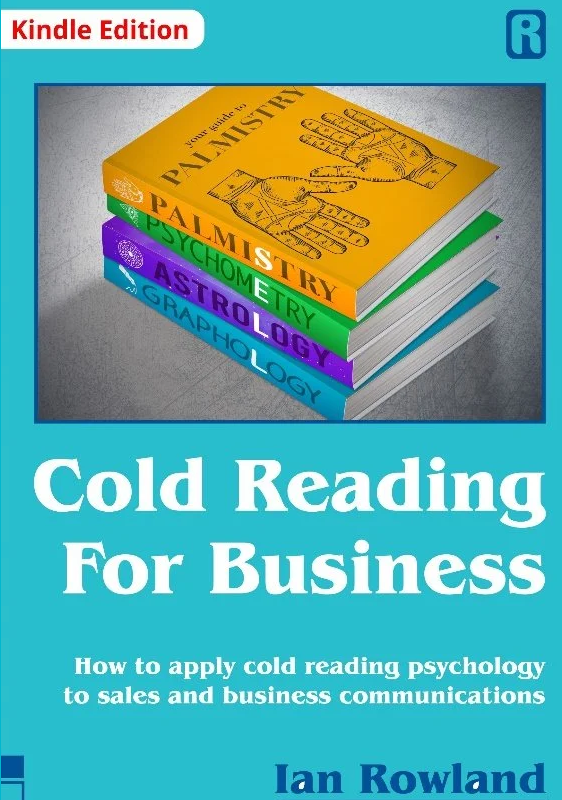Most Common Cold Reads: How They Work and Why They Feel Accurate
Most Common Cold Reads: How They Work and Why They Feel Accurate
Cold reading has fascinated audiences for decades. Whether on stage, in a psychic’s parlor, or even in casual conversation, cold reading creates the illusion that someone knows personal details about you without any prior information. To understand the technique, it helps to study the most common cold reads.
In this guide, we’ll explore the most common cold reads, explain why they’re so effective, and show you how to recognize them in real life.
What Are Cold Reads?
Before diving into the most common cold reads, let’s clarify what cold reading is. Cold reading is a communication technique where someone makes statements that seem specific but are actually general enough to apply to most people. These statements often feel eerily personal because of the way our minds interpret them.
The most common cold reads take advantage of psychology, pattern recognition, and human desire for validation.
Why the Most Common Cold Reads Work
There are three main psychological reasons the most common cold reads feel so convincing:
The Forer Effect – People accept vague, flattering statements as uniquely accurate.
Confirmation Bias – We remember the “hits” and forget the “misses.”
Self-Interpretation – We subconsciously adjust vague statements to fit our own experiences.
This combination makes the most common cold reads both powerful and persuasive.
The Most Common Cold Reads Explained
Here are the most common cold reads you’ll encounter:
1. The Barnum Statement
“You have a strong need for others to like and admire you, but you can also be critical of yourself.”
Why it works: This fits almost everyone. It’s flattering but also slightly self-critical, making it believable.
2. The Rainbow Ruse
“You are generally a calm person, but when something really matters to you, emotions can run high.”
Why it works: By attributing opposite qualities, this most common cold read covers all bases.
3. The Jacques Statement
“At work, you sometimes feel you’re not reaching your full potential.”
Why it works: Nearly everyone has felt underutilized at some point in their career.
4. The Greener Grass Statement
“You sometimes wonder if you’ve made the right choices and whether life could have taken a different path.”
Why it works: Who hasn’t entertained thoughts of “what if”? This makes it one of the most common cold reads.
5. The Fuzzy Fact
“I sense there’s been a recent change in your life—something that disrupted your routine.”
Why it works: Life is full of changes, big and small, so this almost always lands.
6. The Push Statement
“You’ve had a disagreement with someone recently, but it’s nothing you can’t overcome.”
Why it works: Disagreements are universal, and reassurance makes it feel comforting.
7. The Some People Ruse
“Some people see you as outgoing, but others recognize you have a quiet, reflective side.”
Why it works: It’s flattering, flexible, and nearly impossible to dispute.
How Cold Readers Use the Most Common Cold Reads
Professional cold readers, mentalists, and psychics use the most common cold reads as their foundation. They start with broad, widely applicable statements and then refine them based on feedback. A simple nod, smile, or hesitation from the subject helps guide the next statement.
That’s why the most common cold reads can feel incredibly accurate even though they’re designed to fit almost anyone.
Everyday Examples of the Most Common Cold Reads
You don’t need to visit a psychic to experience cold reading. The most common cold reads appear in:
Sales Conversations: “I get the sense you like to think carefully before making big decisions.”
Dating: “You seem independent, but I can tell you also value deep connections.”
Networking: “You strike me as someone who works hard but also enjoys balance.”
These phrases sound flattering, relatable, and insightful—all hallmarks of the most common cold reads.
How to Spot the Most Common Cold Reads
Recognizing the most common cold reads is a useful life skill. Look out for these clues:
The statements are flattering but vague.
They cover opposite traits in the same breath.
You’re encouraged to interpret the meaning in a way that fits your life.
The reader adjusts based on your reactions.
Once you know these signs, you’ll notice the most common cold reads everywhere.
Ethical Use of the Most Common Cold Reads
Like any powerful communication tool, the most common cold reads can be used positively or negatively. In entertainment, they’re fun and astonishing. In conversations, they can help build rapport. But when misused such as pretending they reveal supernatural insights they can mislead and exploit trust.
The most responsible use of the most common cold reads is as a way to connect, engage, and create shared understanding.
The most common cold reads aren’t magic they’re psychology in action. They succeed because they mirror universal human experiences and invite people to see themselves in the words.
By learning to recognize and understand the most common cold reads, you gain sharper critical thinking, stronger communication skills, and an appreciation for the artistry behind performers who use them.
So the next time someone tells you, “You’re the kind of person who’s strong on the outside but sometimes feels sensitive inside,” you’ll know you’ve just heard one of the most common cold reads in action.





